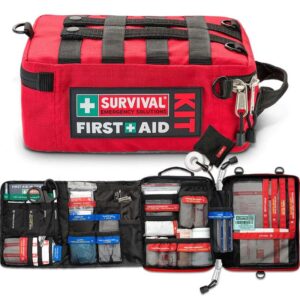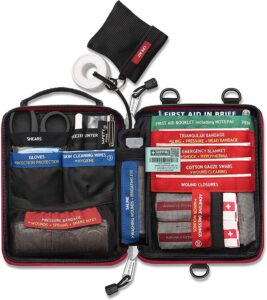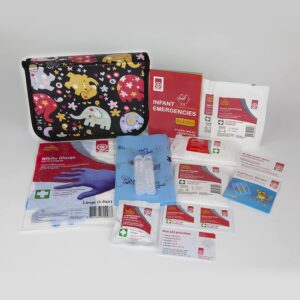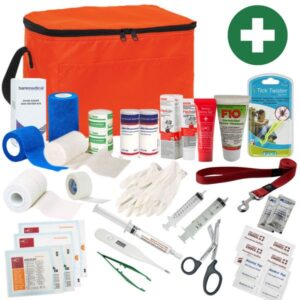Reviewed by health expert Sally Russell, MN, CMSRN, CNE
How to choose a pre-made first aid kit
SafeWise experts have years of firsthand experience testing the products we recommend. Learn how we test and review.
One of the biggest perks of a pre-made first aid kit is not having to remember where everything is during an emergency. When your kiddo scrapes their knee, you immediately know where to get the antibiotic cream and their favourite character-themed bandages.
But choosing a first aid kit isn’t always simple. Grocery stores and pharmacies have several options, but how do you know which is the best first aid kit for your lifestyle?
This guide will illuminate your personal first aid kit needs and share our top recommendations. You might also like our guides for creating a personalised emergency kit and your own DIY first aid kit.
Choose a first aid kit that fits your unique needs
No matter your needs, there's a first aid kit on the market that will serve you well. If you're a parent of a newborn, for example, you need a kit fitted to an infant’s needs. It would include items to treat croup, earaches, tummy aches, and teething symptoms. If you have pets, you want an entirely different first aid kit with products to remove ticks and treat sore paws.
Hikers and campers have different medical requirements. You spend your time in rugged terrain, which increases your risk of falls and sprains. And if you travel in groups, you may need to purchase a larger first aid kit. For solo adventurers, a smaller, lightweight kit could serve you best.
If you regularly commute or take road trips it's smart to get a car first aid kit that contains flares, jumper cables, water, and food.
Focus on the essentials
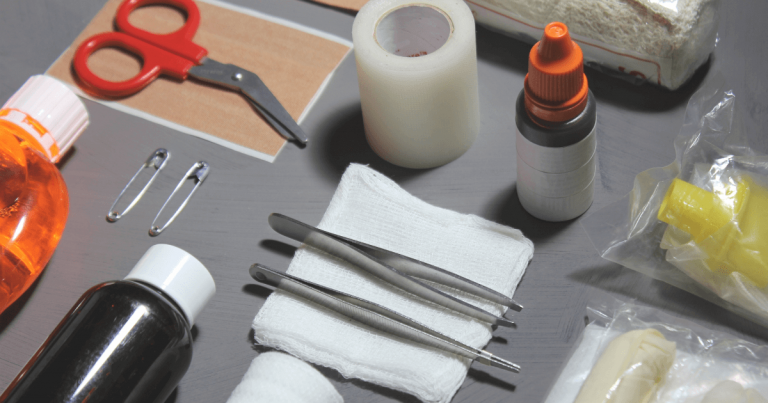
When evaluating a first aid kit, focus on the essentials. The following list isn’t exhaustive, but it covers many of the basic products found in first aid kits. If your kit is missing any of these must-haves, be sure to add them separately.
- Splints or wraps
- Gauze pad packs
- Medical tape
- Bandages (adhesive bandages, triangular bandages, etc.)
- Rubbing alcohol
- Antibiotic ointment or antiseptic wipes
- Tweezers
- Basic pain medication (e.g. paracetamol, ibuprofen)
- Scissors
There are some optional items you may want to consider too:
- Insect bite cream
- Medical tape
- CPR mask
- Cold pack
- Hand sanitiser
- Nitrile gloves
- Emergency blanket
How to safely use first aid products
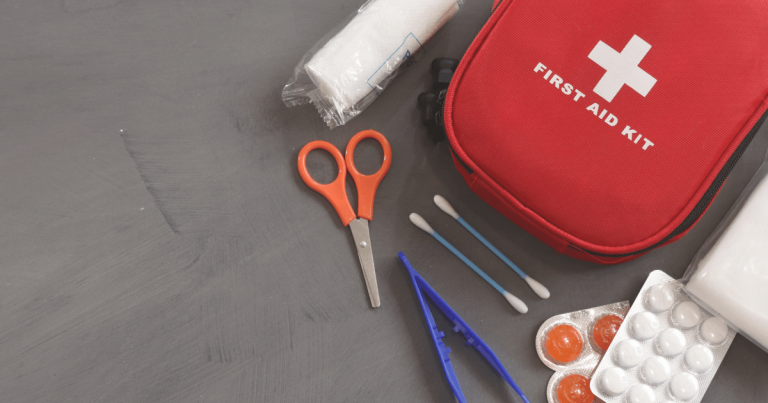
Each item in a first aid kit comes with guidelines for use. Read these to prevent allergic reactions and other maladies. Many first aid kits also come with an instruction book or recommend attending a first aid class.
Reading the book and attending the class are excellent ideas, but if you face an emergency before you do this, use the tips below. They can help you take immediate action and keep everyone safe.
- Keep the kit in a central location. Keep your first aid kit in an easy-to-access and known location—for adults, not kids—within your home or vehicle.
- Examine the active ingredients. Some drugs react poorly with other medications or contain ingredients that could cause a rash. Make sure your products, such as paracetamol, are safe for use.
- Look for indications of use. Every medication, ice pack, and other first aid item includes indications for use. Follow them to ensure a bandage doesn’t stick to a wound.
- Follow the directions. Kids under the age of twelve usually require smaller doses of medications. Read the directions carefully so you don’t over-medicate.
- Remember the expiration dates. Antibiotic cream and other first aid items come with expiration dates. Typically, they lose effectiveness after this date, so make sure you’re aware of when to replace these products. This is particularly important if you're storing prescription medications.
- Keep it cool. Some medications, like insulin, need to be kept cool. If you're storing your emergency kit in the garage or in the boot of your car, there might be an issue.
- Don't use vaseline or antibiotic ointment for burns. It can trap the heat and continue the burn if the burn is new and intense. Aloe is best.
1. Best first aid kit overall: SURVIVAL Work/Home First Aid Kit
We're big fans of the Australian-owned and operated first aid kit company SURVIVAL. Their Work/Home First Aid Kit comes recommended by consumer group Choice and contains just about everything you, your family or your colleagues could possibly need in a first aid scenario, including dressings, bandages, sterilisation wipes, CPR card, saline, tweezers, gloves and more.
Though it isn't the cheapest option out there, we love the colour-coded and clearly-labelled storage bag which is durable and water-resistant.
2. Best travel first aid kit: SURVIVAL Handy First Aid Kit
The SURVIVAL Handy First Aid Kit is small but very mighty, making for a worthy companion on your road trips, camping holidays and hikes. It's made from the same ultra-durable, water-resistant material as its big brother (above) and has the same meticulously organised and labelled interior sections.
At just over half a kilo in weight, it's probably not the best option for flying (unless you have a particularly generous luggage limit), so if you're after something extra compact, their Pocket First Aid Kit is also worth a look.
3. Best first aid kit for babies: St John Ambulance Essential Baby and Kids First Aid Kit
Price is accurate as of post date.
Read full disclaimer.
St John Ambulance has been making first aid kits for decades, so you know you can trust their Essential Baby and Kids First Aid Kit, which comes complete with a detachable baby change mat and everything you need to treat cuts, scrapes and burns, along with a quick guide to infant emergencies.
The compact size makes it easy to pack in your nappy bag or stroller, plus we love its cute elephant design case.
3. Best first aid kit for pets: The Vet Shed First Aid Kit for Pets
This carefully curated pet first aid kit from The Vet Shed is filled with essentials for treating just about any common injury your beloved four-legged friend might experience.
It's got the usual first aid kit suspects like bandages, gauze, scissors, tape and saline, but also more animal-specific stuff like a tick twister, dog lead, and pet-friendly wound ointment. It's a must for owners of adventurous fur children.
